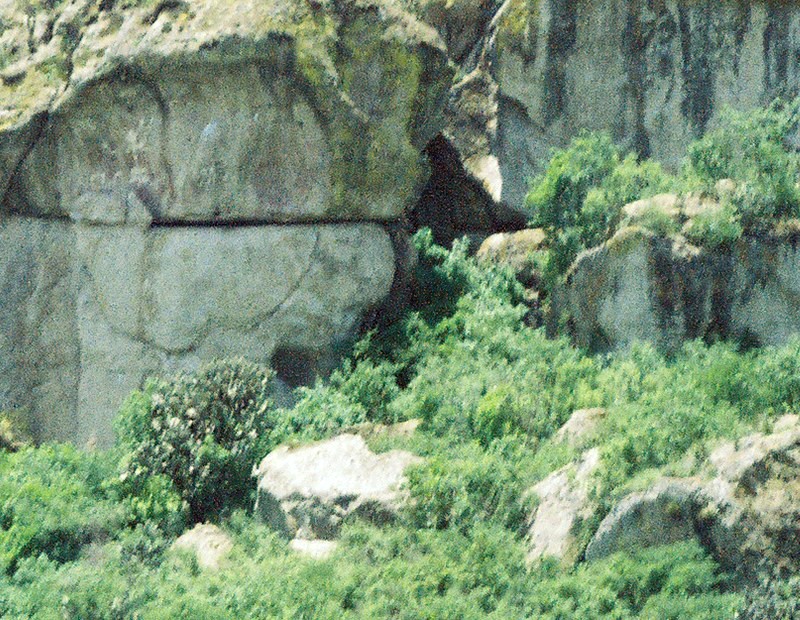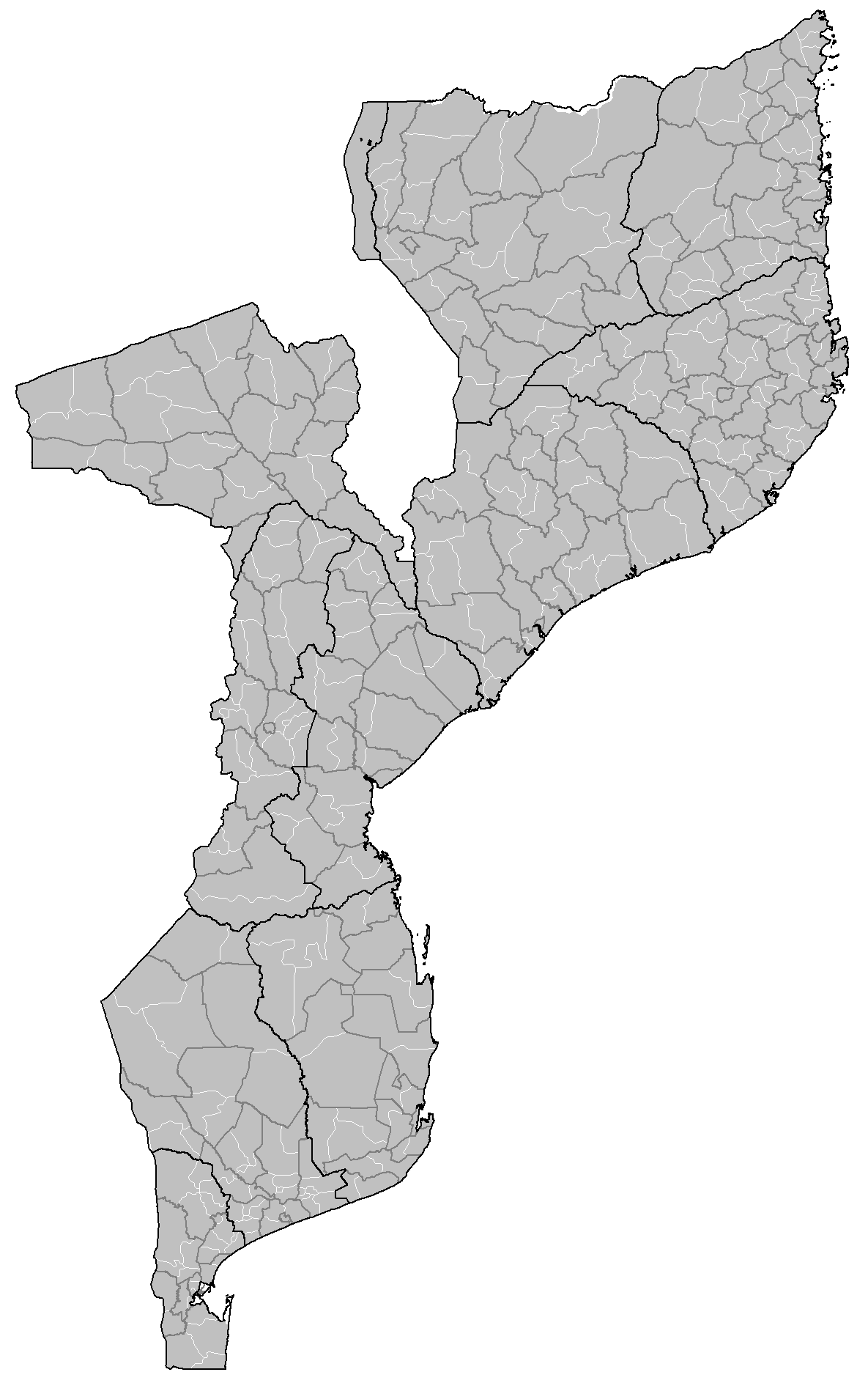|
Angónia District
Angónia District is a district in the northern part of Tete Province in the central region of Mozambique. Its administrative center is the town of Ulongué. The district is located in the northwest of the province, and borders with Dedza District of Malawi in the north, Ntcheu District of Malawi in the east, Tsangano District in the south, and with Macanga District in the west. The area of the district is . It has a population of 335,808 as of 2007. Geography The district is mountainous; the principal mountains are Monte Dómuè (), Macungua (), and Chirobwé (). According to the Köppen climate classification, the climate of the district is tropical humid (BSw), with large variations with altitude. The average rainfall in the district varies between and . History The name means "Angoni land". ''Angoni'' is the plural of ''Ngoni/Nguni'', migrant peoples from South Africa after the disintegration of Zulu Empire in the nineteenth century. The language spoken in the distr ... [...More Info...] [...Related Items...] OR: [Wikipedia] [Google] [Baidu] |
Districts Of Mozambique
The provinces of Mozambique are divided into 128 districts. The districts are listed below, by province: Cabo Delgado Province *Ancuabe District *Balama District *Chiúre District *Ibo, Mozambique, Ibo District *Macomia District *Mecúfi District *Meluco District *Mocímboa da Praia District *Montepuez District *Mueda District *Muidumbe District *Namuno District *Nangade District *Palma, Mozambique, Palma District *Pemba-Metuge District *Quissanga District Gaza Province *Bilene Macia District *Chibuto District *Chicualacuala District *Chigubo District *Chókwè District *Guijá District *Mabalane District *Manjacaze District *Massangena District *Massingir District *Xai-Xai District Inhambane Province *Funhalouro District *Govuro District *Homoine District *Inharrime District *Inhassoro District *Jangamo District *Mabote District *Massinga District *Morrumbene District *Panda District *Vilanculos District *Zavala District Manica Province *Báruè District *Gondola Distric ... [...More Info...] [...Related Items...] OR: [Wikipedia] [Google] [Baidu] |
Potato
The potato is a starchy food, a tuber of the plant ''Solanum tuberosum'' and is a root vegetable native to the Americas. The plant is a perennial in the nightshade family Solanaceae. Wild potato species can be found from the southern United States to southern Chile. The potato was originally believed to have been domesticated by Native Americans independently in multiple locations,University of Wisconsin-Madison, ''Finding rewrites the evolutionary history of the origin of potatoes'' (2005/ref> but later genetic studies traced a single origin, in the area of present-day southern Peru and extreme northwestern Bolivia. Potatoes were domesticated there approximately 7,000–10,000 years ago, from a species in the '' Solanum brevicaule'' complex. Lay summary: In the Andes region of South America, where the species is indigenous, some close relatives of the potato are cultivated. Potatoes were introduced to Europe from the Americas by the Spanish in the second half of th ... [...More Info...] [...Related Items...] OR: [Wikipedia] [Google] [Baidu] |
Maize
Maize ( ; ''Zea mays'' subsp. ''mays'', from es, maíz after tnq, mahiz), also known as corn ( North American and Australian English), is a cereal grain first domesticated by indigenous peoples in southern Mexico about 10,000 years ago. The leafy stalk of the plant produces pollen inflorescences (or "tassels") and separate ovuliferous inflorescences called ears that when fertilized yield kernels or seeds, which are fruits. The term ''maize'' is preferred in formal, scientific, and international usage as a common name because it refers specifically to this one grain, unlike ''corn'', which has a complex variety of meanings that vary by context and geographic region. Maize has become a staple food in many parts of the world, with the total production of maize surpassing that of wheat or rice. In addition to being consumed directly by humans (often in the form of masa), maize is also used for corn ethanol, animal feed and other maize products, such as corn starch a ... [...More Info...] [...Related Items...] OR: [Wikipedia] [Google] [Baidu] |
Cowpea
The cowpea (''Vigna unguiculata'') is an annual herbaceous legume from the genus '' Vigna''. Its tolerance for sandy soil and low rainfall have made it an important crop in the semiarid regions across Africa and Asia. It requires very few inputs, as the plant's root nodules are able to fix atmospheric nitrogen, making it a valuable crop for resource-poor farmers and well-suited to intercropping with other crops. The whole plant is used as forage for animals, with its use as cattle feed likely responsible for its name. Four subspecies of cowpeas are recognised, of which three are cultivated. A high level of morphological diversity is found within the species with large variations in the size, shape, and structure of the plant. Cowpeas can be erect, semierect (trailing), or climbing. The crop is mainly grown for its seeds, which are high in protein, although the leaves and immature seed pods can also be consumed. Cowpeas were domesticated in Africa and are one of the o ... [...More Info...] [...Related Items...] OR: [Wikipedia] [Google] [Baidu] |
Cassava
''Manihot esculenta'', commonly called cassava (), manioc, or yuca (among numerous regional names), is a woody shrub of the spurge family, Euphorbiaceae, native to South America. Although a perennial plant, cassava is extensively cultivated as an annual crop in tropical and subtropical regions for its edible starchy tuberous root, a major source of carbohydrates. Though it is often called ''yuca'' in parts of Spanish America and in the United States, it is not related to yucca, a shrub in the family Asparagaceae. Cassava is predominantly consumed in boiled form, but substantial quantities are used to extract cassava starch, called tapioca, which is used for food, animal feed, and industrial purposes. The Brazilian farinha, and the related ''garri'' of West Africa, is an edible coarse flour obtained by grating cassava roots, pressing moisture off the obtained grated pulp, and finally drying it (and roasting both in the case of farinha and garri). Cassava is the third-largest so ... [...More Info...] [...Related Items...] OR: [Wikipedia] [Google] [Baidu] |
Postos Of Mozambique
The districts of Mozambique are divided into 405 ''postos''. ''Postos administrativos'' (administrative posts) are the main subdivisions of districts A district is a type of administrative division that, in some countries, is managed by the local government. Across the world, areas known as "districts" vary greatly in size, spanning regions or county, counties, several municipality, municipa .... This name, in use during colonial times, was abolished after independence, and was replaced by ''localidades'' (localities). However, it was re-established in 1986.Lei nº 4/86 de 25 de Julho. Administrative posts are headed by a ''Secretário'' (secretary), which before independence were called ''Chefes de Posto'' (post chief). Administrative posts can be further subdivided into localities, also headed by secretaries. Notes ''This article includes content from the Portuguese Wikipedia article Posto administrativo.'' See also * List of postos of Mozambique References Sub ... [...More Info...] [...Related Items...] OR: [Wikipedia] [Google] [Baidu] |
Chewa Language
Chewa (also known as Nyanja, ) is a Bantu language spoken in much of Southern, Southeast and East Africa, namely the countries of Malawi , where it is an official language, and Mozambique and Zambia. The noun class prefix ''chi-'' is used for languages, so the language is usually called and (spelled in Portuguese). In Malawi, the name was officially changed from Chinyanja to Chichewa in 1968 at the insistence of President Hastings Kamuzu Banda (himself of the Chewa people), and this is still the name most commonly used in Malawi today. In Zambia, the language is generally known as Nyanja or '(language) of the lake' (referring to Lake Malawi). Chewa belongs to the same language group ( Guthrie Zone N) as Tumbuka, Sena and Nsenga. Distribution Chewa is the most widely known language of Malawi, spoken mostly in the Central and Southern Regions of that country. "It is also one of the seven official African languages of Zambia, where it is spoken mostly in the East ... [...More Info...] [...Related Items...] OR: [Wikipedia] [Google] [Baidu] |
Zulu Kingdom
The Zulu Kingdom (, ), sometimes referred to as the Zulu Empire or the Kingdom of Zululand, was a monarchy in Southern Africa. During the 1810s, Shaka established a modern standing army that consolidated rival clans and built a large following which ruled a wide expanse of Southern Africa that extended along the coast of the Indian Ocean from the Tugela River in the south to the Pongola River in the north. A bitter civil war in the mid-19th century erupted which culminated in the 1859 Battle of Ndondakusuka between the brothers Cetshwayo and Mbuyazi. In 1879, a British force invaded Zululand, beginning the Anglo-Zulu War. After an initial Zulu victory at the Battle of Isandlwana in January, the British regrouped and defeated the Zulus in July during the Battle of Ulundi, ending the war. The area was absorbed into the Colony of Natal and later became part of the Union of South Africa. History Rise under Shaka Shaka was the illegitimate son of Senzangakhona, Ch ... [...More Info...] [...Related Items...] OR: [Wikipedia] [Google] [Baidu] |
South Africa
South Africa, officially the Republic of South Africa (RSA), is the southernmost country in Africa. It is bounded to the south by of coastline that stretch along the South Atlantic and Indian Oceans; to the north by the neighbouring countries of Namibia, Botswana, and Zimbabwe; and to the east and northeast by Mozambique and Eswatini. It also completely enclaves the country Lesotho. It is the southernmost country on the mainland of the Old World, and the second-most populous country located entirely south of the equator, after Tanzania. South Africa is a biodiversity hotspot, with unique biomes, plant and animal life. With over 60 million people, the country is the world's 24th-most populous nation and covers an area of . South Africa has three capital cities, with the executive, judicial and legislative branches of government based in Pretoria, Bloemfontein, and Cape Town respectively. The largest city is Johannesburg. About 80% of the population are Black Sou ... [...More Info...] [...Related Items...] OR: [Wikipedia] [Google] [Baidu] |
Köppen Climate Classification
The Köppen climate classification is one of the most widely used climate classification systems. It was first published by German-Russian climatologist Wladimir Köppen (1846–1940) in 1884, with several later modifications by Köppen, notably in 1918 and 1936. Later, the climatologist Rudolf Geiger (1894–1981) introduced some changes to the classification system, which is thus sometimes called the Köppen–Geiger climate classification system. The Köppen climate classification divides climates into five main climate groups, with each group being divided based on seasonal precipitation and temperature patterns. The five main groups are ''A'' (tropical), ''B'' (arid), ''C'' (temperate), ''D'' (continental), and ''E'' (polar). Each group and subgroup is represented by a letter. All climates are assigned a main group (the first letter). All climates except for those in the ''E'' group are assigned a seasonal precipitation subgroup (the second letter). For example, ''Af'' i ... [...More Info...] [...Related Items...] OR: [Wikipedia] [Google] [Baidu] |





